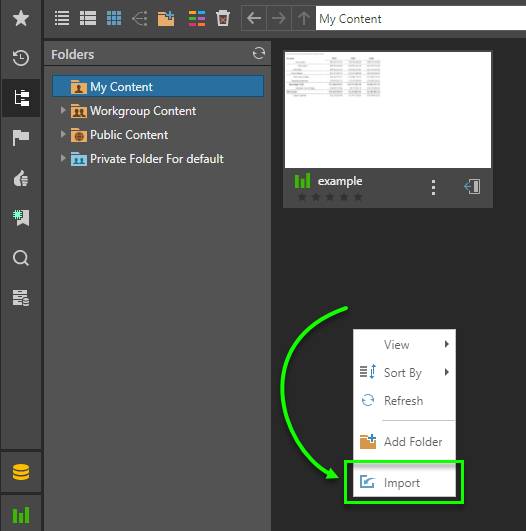The Import and Export actions allow users to manually extract and copy existing content items (and folders) from one Pyramid instance into "PIE" files and then allowing them to import those "PIE" files to an alternative Pyramid instance or destination. For example, you may have a test environment and a production environment and need to copy the tested content and structures to the final production instance.
Import / Export are the manual operations that can be performed with either the Migration Wizard or using the export / import API functions. The functions can work on single or multiple content items, related content items, and entire content folders.
Copy-Deep Paste
While the migration approach is generally used for moving content between two or more Pyramid instances, users are often tempted to use the import-export process to copy wholesale structures from one location to another WITHIN the SAME Pyramid instance, since it duplicates the entire content hierarchy.
Functionally, this is a legitimate process using the manual import-export model with external PIE files. However, it is identical to the simpler "copy-deep paste" functions using the UI and context menus.
PIE Files
Pyramid Import-Export files or "PIE" files are the medium through which content is exported and them re-imported. When an export operation is performed, a PIE file will be presented back to the user through the browser as a download-able. This file can then be imported through the browser as part of the import operation.
Accessing Import-Export
The two functions are exposed primarily through the different views of the content manager. However, they appear on different menus and panels.
Export
The export action is available from any of the content manager views through an item 's context menu or a specific item's action panel (examples shown below). After triggering the export action, the user will be prompted with an export options dialog - that influences what is exported and how the import will operate on the PIE file.
Exporting large collections of content can take some time to execute. Please be patient during export processing.


The function is also available for folders from the Content Explorer - using the folder tree context menu, a folder item in the content listing or via the folder's action panel (example shown below).

Export Options
Once the export action is triggered, the user will be prompted with a follow up "export options" dialog .
- Maintain Folder Structure - this ensure that the exported contents inside the PIE file also keep their folder positions. If this switch is not enabled, the content will appear as a single flat list of items when re-imported into the target folder destination.
- Do not Export Related Content - by default, all related content for the items selected for export are INCLUDED in the export. Related contents include all nested items used in the content tree. If this is checked, only the items selected will be exported WITHOUT any nested elements. (See Lineage or Related content for a deeper explanation for nested, hierarchical content).

Import
Unlike the export action, the import action is only available in the content explorer view since it needs a folder destination to operate within. As such, there are 3 entry points for importing PIE files that were previously extracted.
The first is using the context menu of the folder tree - where the contents of the PIE file will be imported INTO the selected folder on the tree.

The second is using the context menu of a sub-folder item in item listing - where the contents of the PIE file will be imported INTO the selected sub-folder.

The last is using the background context menu of the item listing - where the contents of the PIE file will be imported INTO the currently selected folder.

Importing large collections of content can take some time to execute. Please be patient during import processing.